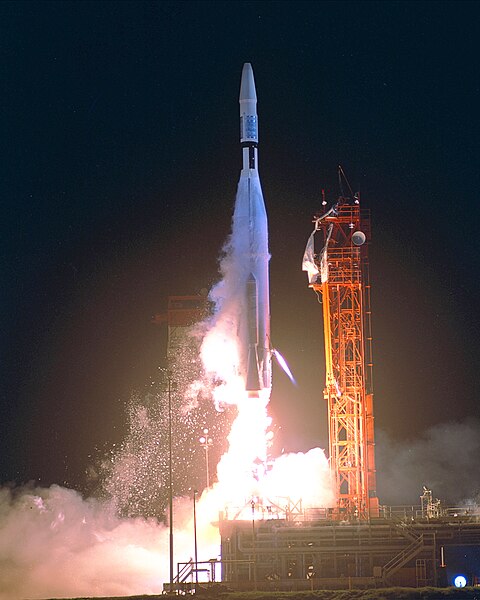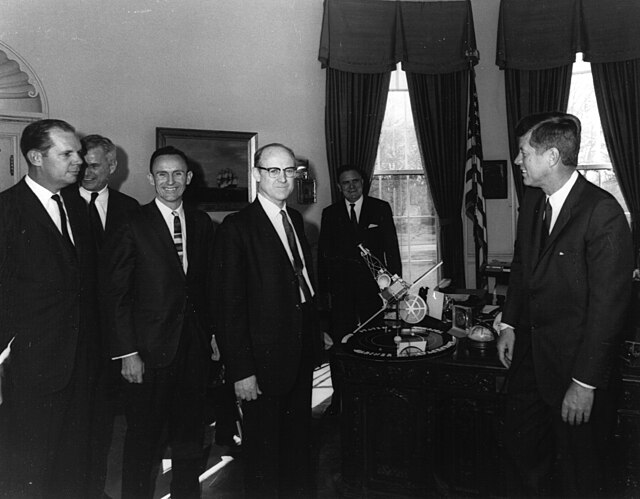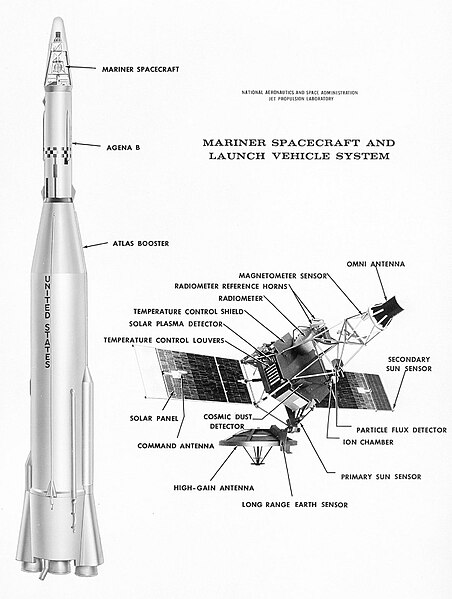Mariner 1, built to conduct the first American planetary flyby of Venus, was the first spacecraft of NASA's interplanetary Mariner program. Developed by Jet Propulsion Laboratory, and originally planned to be a purpose-built probe launched summer 1962, Mariner 1's design was changed when the Centaur proved unavailable at that early date. Mariner 1, were then adapted from the lighter Ranger lunar spacecraft. Mariner 1 carried a suite of experiments to determine the temperature of Venus as well to measure magnetic fields and charged particles near the planet and in interplanetary space.
Mariner 2 engineering model, identical to Mariner 1
Mariner II trajectory projected on the ecliptic plane.
Diagram of Mariner 1
Mariner 1 in JPL's Spacecraft Assembly Facility
The Mariner program was conducted by the American space agency NASA to explore other planets. Between 1962 and late 1973, NASA's Jet Propulsion Laboratory (JPL) designed and built 10 robotic interplanetary probes named Mariner to explore the inner Solar System - visiting the planets Venus, Mars and Mercury for the first time, and returning to Venus and Mars for additional close observations.
Launch of Mariner 1 in 1962
Dr. William H. Pickering, (center) JPL Director, presents a Mariner 2 spacecraft model to President John F. Kennedy in 1963. NASA Administrator James Webb is standing directly behind the Mariner model.
Mariner 2
Diagram of Mariner 1 and 2 with Atlas-Agena launch vehicle







